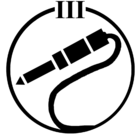Thought I'd play some vinyl this evening on my turntable which is hooked up to a pair of Fives. I was playing with the line in level and found I can actually have it set to the lowest - level 1, and still get decent sound volume through the Fives.
Is it better to have it set as low as possible or doesn't it really make a difference to the sound quality?
What do others have theirs set to?

